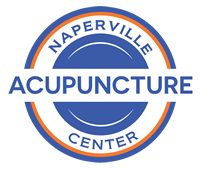“Have you heard of dry needling?”
“My physical therapist wants me to try dry needling. Should I?”
“What is the difference between dry needling and acupuncture?”
Have you heard of dry needling yet? Maybe you have heard about it from your doctor or physical therapist. Perhaps you have friends who have experienced it and they have suggested you try it. It’s different than acupuncture! Maybe you know it involves acupuncture needles. If you’ve seen it, it looks like acupuncture, but it’s not acupuncture. Or is it?
There’s been a lot of confusion around this topic for the past several years. So, at long last, I decided it is time to clarify the differences and similarities of what acupuncture and dry needling are. Since I am an acupuncturist, let’s first take a quick look at what acupuncture is, and then see how dry needling fits into the picture.
What is Acupuncture?
Acupuncture finds its historical roots in ancient China. Acupuncture first made it’s way to the US in the form of TCM, or Traditional Chinese Medicine. Acupuncture uses stainless steel, sterile needles to stimulate areas within the body. The purpose of acupuncture is to relieve pain, reduce stress, and improve function.
How does acupuncture work? Here is where it begins to get tricky. We have a traditional understanding of how acupuncture works (which some acupuncturists still use today), and a modern understanding of how acupuncture works (which is what I use in my practice). What is the difference and why does it matter?
In the traditional understanding of acupuncture, the body is considered to have a vital energy. This vital energy, or “Qi” flows along lines called meridians, This energy can become stuck due to trauma, overuse, or stress. This energy stagnation can result in pain and dysfunction. Stagnation can be relieved by stimulating acupuncture points along the meridians. The acupuncture points can be located where the pain is, or the can be located in other parts of the body, such as the ear, hand or foot.
The modern understanding of acupuncture, on the other hand, is concerned primarily with muscles and the nerves which supply them. From this perspective, treatment is given to “trigger points,” or knots which form in the muscles. The trigger points also form due to stress, trauma or overuse. Placing the needle in the trigger point causes the muscle to fasiculate, or “twitch,” which is usually followed by profound relief of pain and stress. The action of causing the muscle to twitch with a needle is also what is called “dry-needling.”
Why is it important to understand these two concepts? Because dry needling is nothing other than doing acupuncture according to the modern understanding. This is the conceptual framework used by physical therapists, chiropractors, and even some acupuncturists (including myself).
In other words, ALL dry needling, IS acupuncture. But not ALL acupuncture is dry needling. Put another way, dry needling is just one technique, or method, of acupuncture. The physical therapist has access to this technique, but not ALL the styles of acupuncture. There are very effective acupuncture styles which involve putting needles in locations far away from where the pain is, Which means, SOME acupuncturists will treat you in a similar fashion to a physical therapist, and some will not.
Confused yet?
Pros and Cons
The first question that springs to many people’s minds is, “Which is better?” The better question is: “Which is better for me?” Traditional acupuncture or dry needling both need to fit into a comprehensive treatment plan. A good clinician always starts with evaluation, questioning, examination, and diagnosis. These should all come before any technique is decided upon. I use my clinical experience to determine which acupuncture technique is going to best serve the person in front of me. Sometimes dry needling is absolutely the best thing I can do for them. Sometimes a traditional technique is better. Most often, I mix and match using 2 or more styles to come up with a combination that fits the unique individual.
The pros of the dry needling technique are that it can very often produce extraordinary pain relief, quickly. The cons are, it can be uncomfortable initially, and sometimes can produce soreness for a day after treatment. Additionally, some conditions can be aggravated by it. My approach has always been to carefully choose when to use it, and start slowly to see how much a person is comfortable with, and increase over time. This has produced the best results for me.
Should You Try Dry Needling?
Many people have recently learned about dry needling and are eager to try it, understandably so. I first began the dry needling approach in 1999. Chances are, if you have been my patient, you have already had dry needling. If you have ever felt the muscle “twitch” during treatment, you have had dry needling. (If you ever heard me talk about the muscle locations or the “green triangles,” you know what I am talking about). Until recently, I just called it “acupuncture.” No one knew the difference. But today, with the increased awareness of different healing techniques, I take the time to indicate when we are using this method.
If you haven’t been in for awhile, and would like to experience this fabulous technique, give us a call today. one of the wonderful things about acupuncture is that there is always more to learn, and I am constantly finding new ways to better serve you.
Also, if any of you have any questions, give us ac call today! I am always happy to answer your questions.
